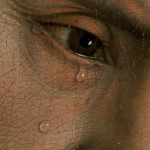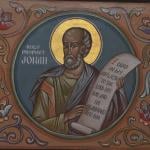Last updated on: July 7, 2016 at 9:25 pm
By
CNA Daily News
Philadelphia, Pa., Jul 7, 2016 / 03:25 pm (CNA/EWTN News).- Pope Francis’ teaching on divorce-and-remarriage and the sacraments represents Catholic tradition and shows the way forward for engaging those who are estranged and hurting, Archbishop Charles Chaput of Philadelphia has said. “As with all magisterial documents, Amoris Laetitia is best understood when read within the tradition of the Church’s teaching and life,” Archbishop Chaput said in July 1 pastoral guidelines for the Archdiocese of Philadelphia.Amoris laetitia is Pope Francis’ apostolic exhortation written as a culmination of the 2015 Synod on the Family. Some vague language in the exhortation had allowed a variety of interpretations, and Archbishop Chaput's guidelines were meant to help in the implementation of the document in the Philadelphia archdiocese. “The Holy Father himself states clearly that neither Church teaching nor the canonical discipline concerning marriage has changed,” the archbishop said. “The Holy Father’s exhortation should therefore be read in continuity with the great treasury of wisdom handed on by the Fathers and Doctors of the Church, the witness of the lives of the saints, the teachings of Church councils, and previous magisterial documents.” The archbishop said the exhortation, which includes “sections of exceptional beauty and usefulness”, calls for “a sensitive accompaniment” for those whose grasp of Christian teaching on marriage and family life is imperfect and for those who may not live according to Church teaching but desire to take part in Church life, including the Sacraments. “In all of this the Holy Father, in union with the whole Church, hopes to strengthen existing families, and to reach out to those whose marriages have failed, including those alienated from the life of the Church,” he added. Pope Francis' statements, he said, “build on the classic Catholic understanding, key to moral theology, of the relationship between objective truth about right and wrong … and how the individual person grasps and applies that truth to particular situations in his or her judgment of conscience.” He recalled that “the subjective conscience of the individual can never be set against objective moral truth,” and quoted several times from Veritatis splendor, St. John Paul II's 1993 encyclical on fundamental questions regarding the Church's moral teaching. Archbishop Chaput considered how this applies in cases of divorced-and-remarried persons, cohabiting couples, and persons with same-sex attractions or relationships. “With divorced and civilly-remarried persons, Church teaching requires them to refrain from sexual intimacy,” he explained. “This applies even if they must (for the care of their children) continue to live under one roof. Undertaking to live as brother and sister is necessary for the divorced and civilly-remarried to receive reconciliation in the Sacrament of Penance, which could then open the way to the Eucharist.” Pastors should avoid “both a subjectivism that ignores the truth or a rigorism that lacks mercy,” he said. They must always convey Catholic teaching “faithfully to all persons – including the divorced and remarried – both in the confessional as well as publicly.” “They should do this with great confidence in the power of God’s grace, knowing that, when spoken with love, the truth heals, builds up, and sets free,” he added. Archbishop Chaput said pastors who give Communion to divorced-and-remarried persons who try to live chastely must take care to avoid the appearance of endorsement of divorce-and-remarriage. “As Amoris Laetitia notes, bishops must arrange for the accompaniment of estranged and hurting persons with guidelines that faithfully reflect Catholic belief,” he said, citing paragraph 300 of the Pope’s document. That passage stressed careful discernment that does not avoid “the gospel demands of truth and charity, as proposed by the Church.” It stressed the need for “humility, discretion, and love for the Church and her teaching” for discernment for those in irregular marital situations. The divorced-and-remarried are invited to attend Mass, pray, and take part in parish activities. Their children should be brought up in the faith and are “integral to the life of the Catholic community.” Cohabiting couples without children should domestically separate to prepare themselves for marriage. Those with children may have to live together, for the children’s sake, “but in chastity.” For those with same-sex attractions, Church ministers should emphasize “that they are loved by God, that Jesus desires them to receive an inheritance as adopted sons and daughters of the Father, and that, as with every Christian, this is made possible through the gift of grace,” Archbishop Chaput said. Given Christian teaching on marriage and sexual intimacy, those with same-sex attractions are “called to struggle to live chastely for the kingdom of God.” For same-sex couples, the archbishop noted the importance of remembering that some couples “live together in chaste friendship.” “The Church welcomes all men and women who honestly seek to encounter the Lord, whatever their circumstances,” he said. “But two persons in an active, public same-sex relationship, no matter how sincere, offer a serious counter-witness to Catholic belief, which can only produce moral confusion in the community. Such a relationship cannot be accepted into the life of the parish without undermining the faith of the community, most notably the children.” Archbishop Chaput noted the “great suffering” of those who are separated or divorced. There is no obstacle to receiving Holy Communion for those who recognize that their first marriage is indissoluble and refrain from a new union. Indeed, they should receive the sacraments regularly, he noted. “God is faithful to them even when their spouses are not, a truth that fellow Catholics should reinforce,” he said. Archbishop Chaput repeated that marriage is permanent, monogamous, and open to life. “Jesus himself raised marriage to new dignity,” he said. “The valid marriage of two baptized persons is a sacrament that confers grace, with the potential to deepen the couple’s life in Christ, especially through the shared privilege of bringing new life into the world and raising children in the knowledge of God.” The archbishop stressed the great joy of marriage, acknowledging its stresses and suffering while also praising the grace of the sacrament, which can “strengthen [the couple's] relationship, not just as an idea but as a reality that impacts their daily married life.” One prominent Catholics objected to the archbishop’s presentation of Catholic teaching. Philadelphia Mayor Jim Kenney on Twitter snapped that Archbishop Chaput’s actions “are not Christian.” Read more
















